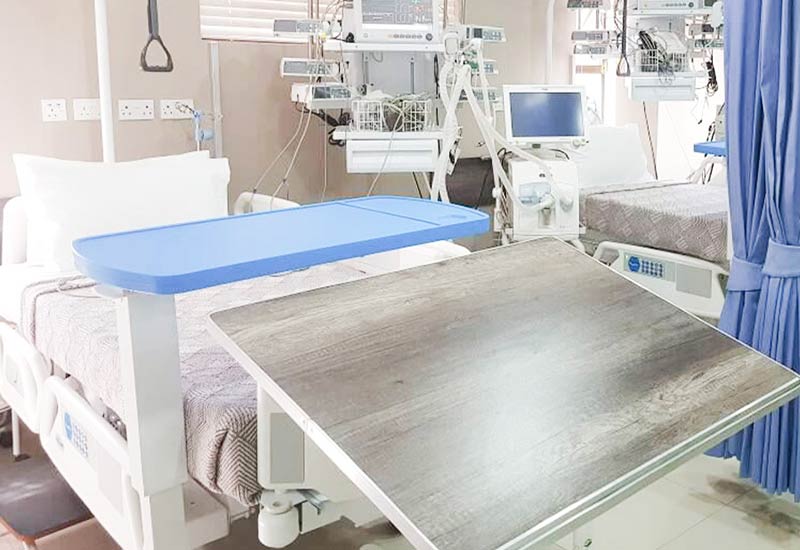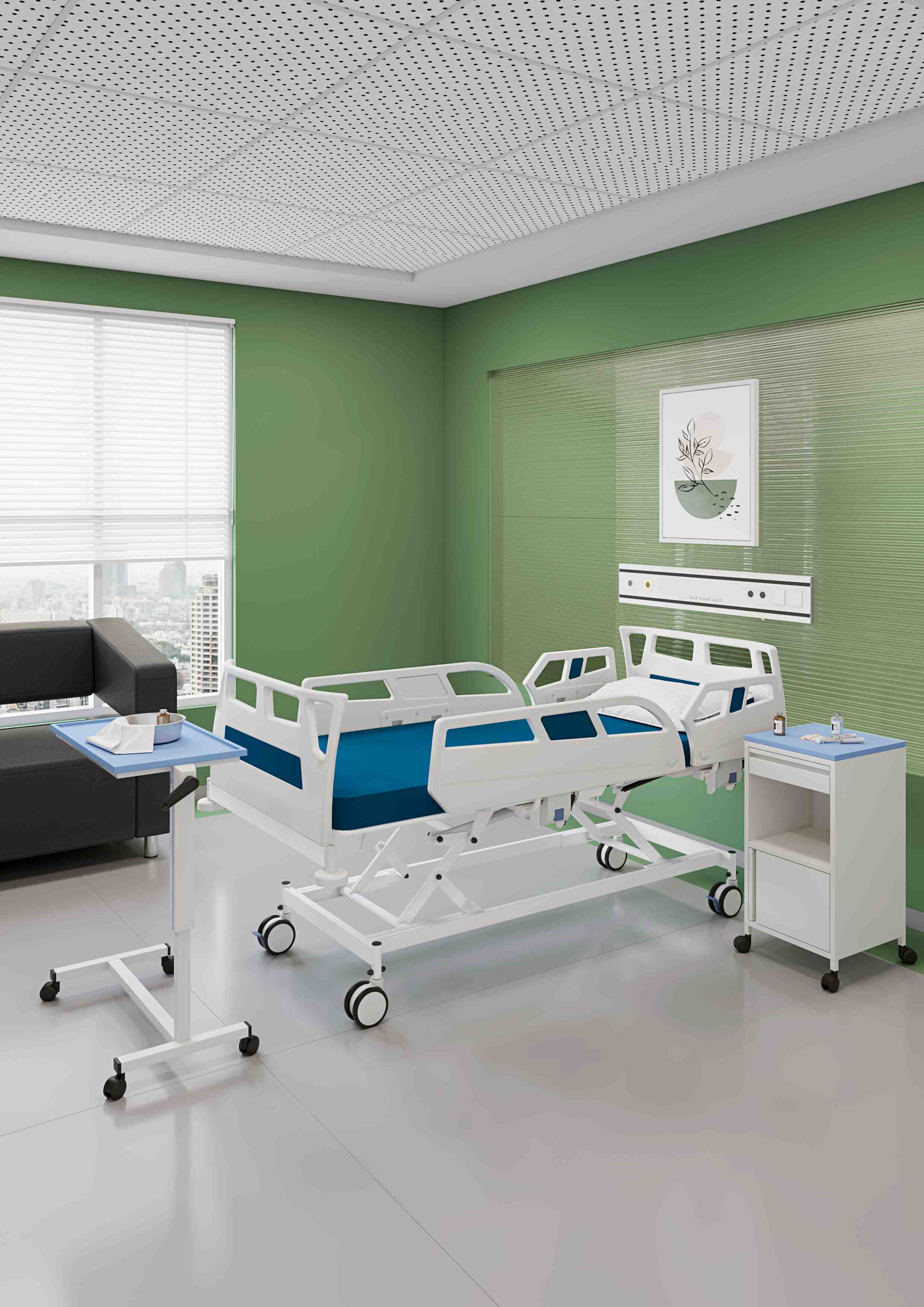The Best Guide To Hospital Beds For Home Use
The Best Guide To Hospital Beds For Home Use
Blog Article
Top Guidelines Of Hospital Beds For Home Use
Table of Contents4 Easy Facts About Hospital Beds For Home Use ExplainedSome Known Incorrect Statements About Hospital Beds For Home Use How Hospital Beds For Home Use can Save You Time, Stress, and Money.Excitement About Hospital Beds For Home Use8 Simple Techniques For Hospital Beds For Home UseThe Greatest Guide To Hospital Beds For Home UseSee This Report about Hospital Beds For Home Use
Next, we will explore the attributes, makes use of, and Pros and Cons of each type of medical facility bed in depth. A hands-on hospital bed is the many standard kind of medical facility bed, and all change functions are accomplished through a hand-cranked gadget.These hand-cranked devices are generally mounted at the foot or side of the bed, and the caretaker or patient can change the elevation or tilt angle of the bed by trembling the manage. Given that no electrical components are called for, are usually less costly than electric hospital beds, ideal for medical organizations or family members with restricted budget plans.
The smart Trick of Hospital Beds For Home Use That Nobody is Discussing
For individuals who require to adjust their posture or height regularly, hands-on beds may not be hassle-free enough due to the fact that each modification calls for hand-operated procedure. If the bed requires to be readjusted often, taking care of staff may require to spend more physical stamina to operate the hand-cranked tool - hospital beds for home use. Manual beds are typically ideal for clients in the recuperation duration or occasions with reduced nursing needs
Normally, the change of the back and legs is regulated by electrical motors, while the total height adjustment still requires to be done manually. The purpose of this style is to reduce costs and energy intake while keeping high operational benefit. Compared to hands-on healthcare facility beds, semi-electric health center beds are much more hassle-free in adjusting the back and legs, especially for clients who require to readjust their position regularly.
Given that just some functions rely upon electrical power, semi-electric healthcare facility beds consume less power during usage. Given that the general elevation still requires to be changed manually, it may not be as practical as completely electric healthcare facility beds for people that need to readjust the bed elevation frequently. Contrasted with hands-on medical facility beds, semi-electric hospital beds are a little more intricate to run, requiring customers to grasp the mix of electric and hand-operated operations.
Electric healthcare facility beds have high modification accuracy and can be specifically adapted to a particular angle and elevation according to the requirements of clients to supply one of the most comfortable support. All-electric healthcare facility beds are normally equipped with a selection of additional functions, such as integrated ranges, cushion stress change, etc, to meet the unique needs of different patients.
Not known Details About Hospital Beds For Home Use
A reduced bed is a specifically made hospital bed that can be adapted to a very reduced degree, usually just a few inches from the ground. The purpose of this layout is to decrease the risk of people dropping from the bed, especially for people that go to threat of falling, such as the senior or people with restricted wheelchair.

What Does Hospital Beds For Home Use Do?
provide a care environment suitable for children's elevation and body shape, increasing the comfort and security of kids. Some pediatric beds are additionally geared up with brightly colored bed rails or anime designs to reduce the anxiety of kids in the health center atmosphere. For children that need to remain in bed for a very long time, pediatric beds are normally equipped with anti-bedsore bed mattress, flexible bed rails and other functions to offer detailed treatment support.
The shipment bed is also outfitted with postpartum recuperation features, such as cushion modification, bed heating, etc, to aid mothers recoup quicker. The extensive care bed (ICU Bed) is developed for the critical care unit (ICU) and has thorough tracking and nursing functions. This kind of bed is generally geared up with interfaces for a range of tracking equipment, which can keep an eye on the person's crucial indicators in real time, such as heart rate, high blood pressure, respiration, and so on.
Hospital Beds For Home Use for Beginners
The intensive treatment bed has a fully electric change function, which can promptly adjust the angle and position of the bed to fulfill the requirements of different treatments and treatment. The design of ICU bed thinks about the demand of rescue procedure. The bed can be promptly adjusted to one of the most ideal rescue posture and coordinate with making use of rescue equipment.
It can properly separate patients from the outdoors and minimize the threat of infection transmission. Seclusion beds are generally outfitted with unique bed curtains or securing covers and connected to air purification systems to keep the air around the bed tidy. Seclusion beds are particularly created to stop the spread of pathogens from transmittable people and shield the safety and security of various other people and medical staff.
Seclusion beds are geared up with air filtration systems that can filter bacteria and particle matter in the air to keep the air around the bed tidy. Can also be changed to different positions.
The smart Trick of Hospital Beds For Home Use That Nobody is Talking About
Broader and sturdier than a typical bed. Obese, weight problems, individual sizeDesigned for patients in danger of falling out of bed. Reduced to the ground than a conventional bed. Patient falls, bed heightDesigned find out here for children. Smaller in size than a conventional bed. Pediatrics, child-sized equipmentUsed during giving birth. Furnished with attributes such as stirrups and a headrest.

In a health care setting, picking the right bed can not only improve the efficiency of treatment, however also significantly improve person convenience and security. By understanding the types and uses these beds, medical care facilities and family members caretakers can better support and care for their people.
The Of Hospital Beds For Home Use
HomeCare Health Center Beds, a department of DiaMedical U.S.A., is committed to supplying complete openness for its customers. Patients can be bewildered by the various options in long term care products, and HomeCare Healthcare facility Beds is devoted to simplifying this process, while making sure clients obtain the details and official website assistance they need.
Medicare Part B (Medical Insurance) covers healthcare facility beds as resilient clinical devices (DME) that your physician prescribes for usage in your home. After you meet the Part B insurance deductible you pay 20% of the Medicare-approved quantity (if your supplier accepts project). Medicare spends for various kinds of DME in various ways.

Report this page